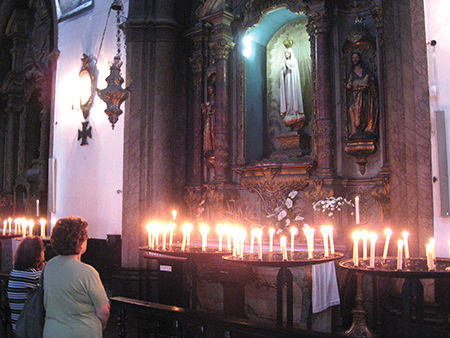Recently a friend of mine faced a series of setbacks that left her feeling rather defeated by life. She confided in me that she felt that she just could not go on like this. What to do? Have you ever had one of those days, weeks or even months, when you felt a similar sense of “woe is me”?
Lent is the liturgical season in which we consciously embrace the path of descent into the limitations and difficulties of reality — to look at the “woefulness” of life through the lens of faith.
We move through pain to new life; this is the Paschal journey. It is through the daily Scriptures and the liturgical practices of this season that we can learn to let go of our unnecessary attachments and trust that God has us in a loving maternal embrace, no matter how we are feeling. God is close to us in the midst of whatever happens in our life. This life and God’s presence are intimately intertwined.
The Lenten practices we choose are meant to assist us in becoming more acutely aware of this immediate presence of the Divine. They are meant to touch every aspect of our humanity: body, soul and spirit.
Lent is the time to prepare for the Sacred Triduum, the central liturgical experience of the Christian faith, through prayer, fasting and almsgiving. These three traditional practices are meant to strengthen us when we face the temptation to be less than authentic in the way we live our life. In other words, they help us to be true to our better selves.
They also serve us by puncturing our inflated sense of self, and inviting us to look at the many ways in which we seek to avoid the core issues of our life (e.g., with endless distractions, profound restlessness, constant pleasure seeking or need for approval). When these spiritual practices are done humbly and wisely, they can open us up to the very heart of God.
For most people, a Lenten “spirituality of subtraction” might be better than adding more activities to an already busy life. After all, we don’t want to feed our already overladen ego with more pride of additional “good works.”
Prayer connects us to the experience of God and reminds us that there is a sacred Presence all around us. Prayer is listening, noticing and responding to this Presence. So rather than praying more prayers this Lent, why not become prayer? Practice being present to the moment — through conscious breathing, focused attention or just sitting in silence.
Fasting connects us with the disparate parts of our inner life and reminds us of what we truly desire. It helps us to get back into the natural rhythm of our humanity, reminding us that we are neither machines nor animals. Perhaps we can fast from watching TV or using social networking tools for a day or more, or fast from negative obsessive thoughts, or gossiping.
Almsgiving connects us with others in our service to human needs. Giving money to our poor is easy. What about immersing yourself in the poverty of another by serving at a soup kitchen, or sitting and listening to someone who is imprisoned in jail or suffering from a mental condition?
Each of these practices is meant to help us grow in the transforming love of God and to enflesh God’s mandate to Receive life, Experience life and Share life. In this way we are participating in the work of “whole making,” or building the reign of God. As we participate in this endeavor, we grow in expansiveness and the large heartedness of Christ. This is what we are to share with others.
So when you are suffering from the “woe is me” syndrome, “go with God” that you might become on earth the very heart of God — letting life, love, healing and forgiveness flow through you to touch others. This is the real work of Lent, the fulfillment of Christ’s dream — to build the Reign of God in this world, right here and right now!
Father Jim Clarke is chair of the archdiocesan Spirituality Commission and director of spiritual formation at St. John’s Seminary in Camarillo. This article is the first in a Lenten Spirituality series by the priests of St. John’s Seminary.

